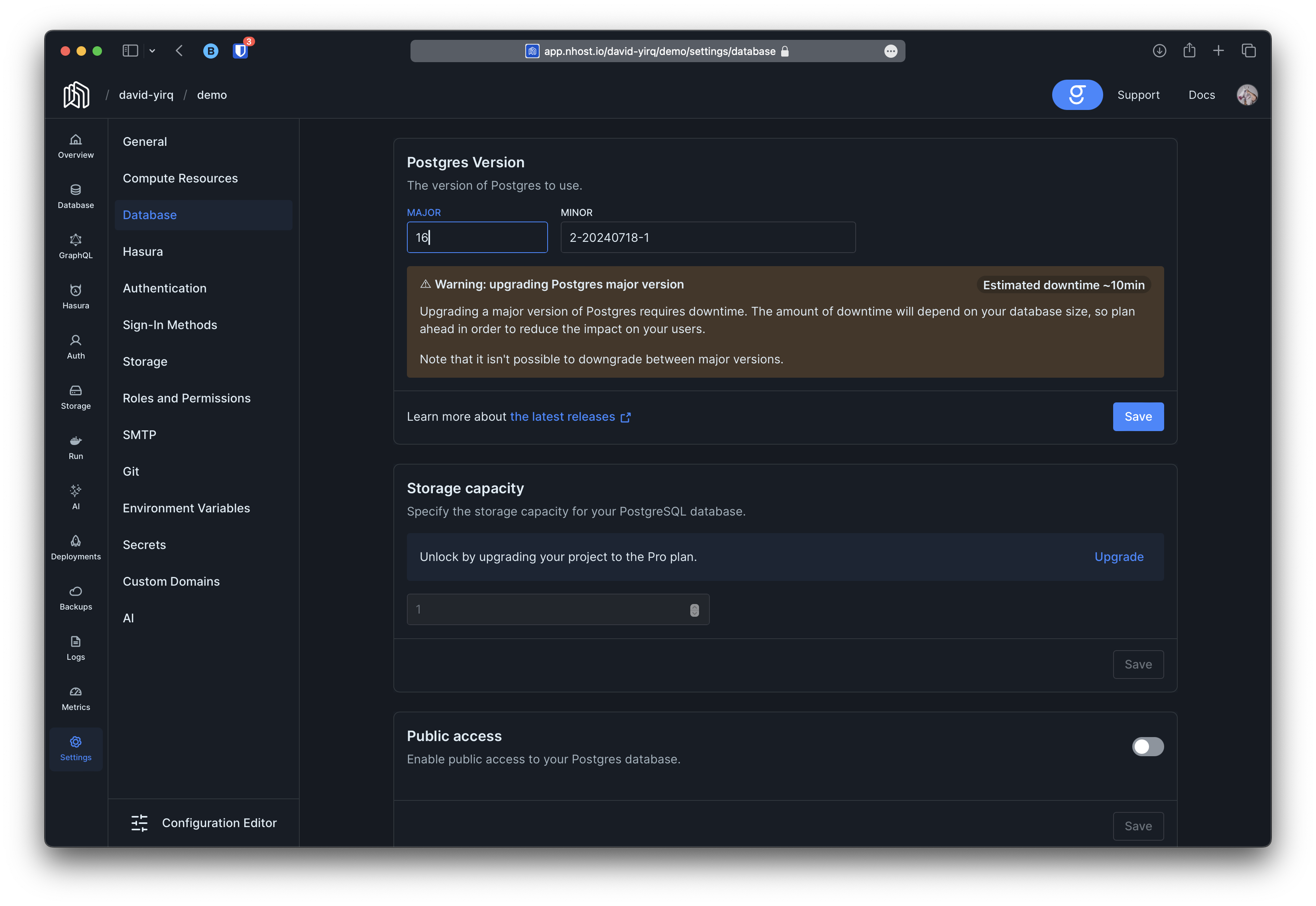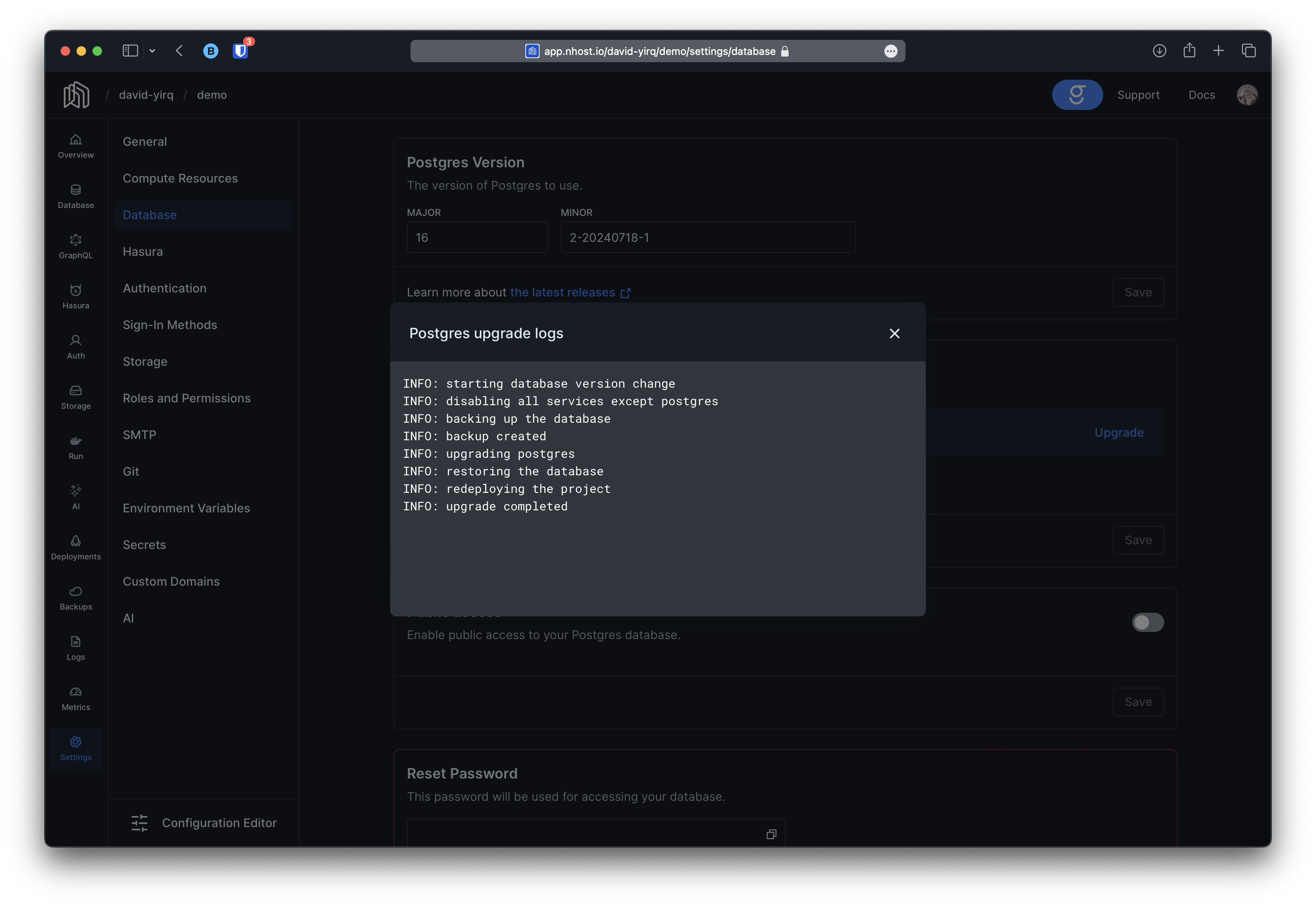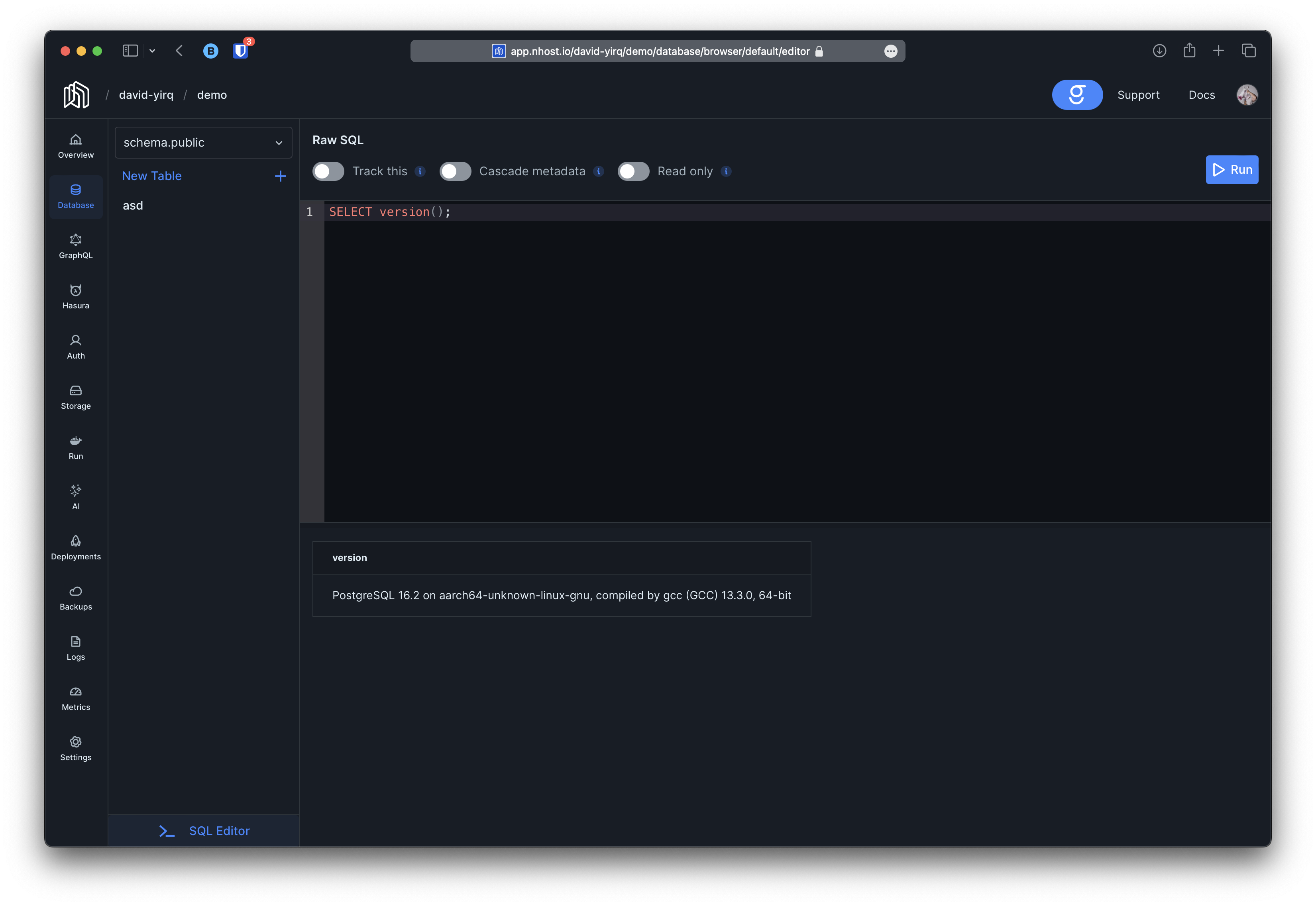Upgrade process
This document only applies when changing Postgres major version (i.e. from 14 to 15/16/17 or from 15 to 16/17). It doesn’e apply when upgrading minor versions (i.e. from 14.5 to 14.11).

Keep in mind that the upgrade process requires downtime. Pay attention to all the information provided to you in the settings page.
 Finally, you can confirm the upgrade by executing the SQL query
Finally, you can confirm the upgrade by executing the SQL query SELECT version();

Projects with connected repos
This process can only be triggered from the dashboard. If you have a project with a connected repository and want to upgrade postgres to a new major version you will have to follow the steps below:
- Upgrade the major version using the dashboard
- Run
nhost config pull or edit the nhost.toml by hand.
- Push to git (this step should be a NOOP and can be skipped)
If you attempt to change major versions via a deployment the deployment will fail. This is done on purpose to avoid unintended upgrades which can lead to downtime.



